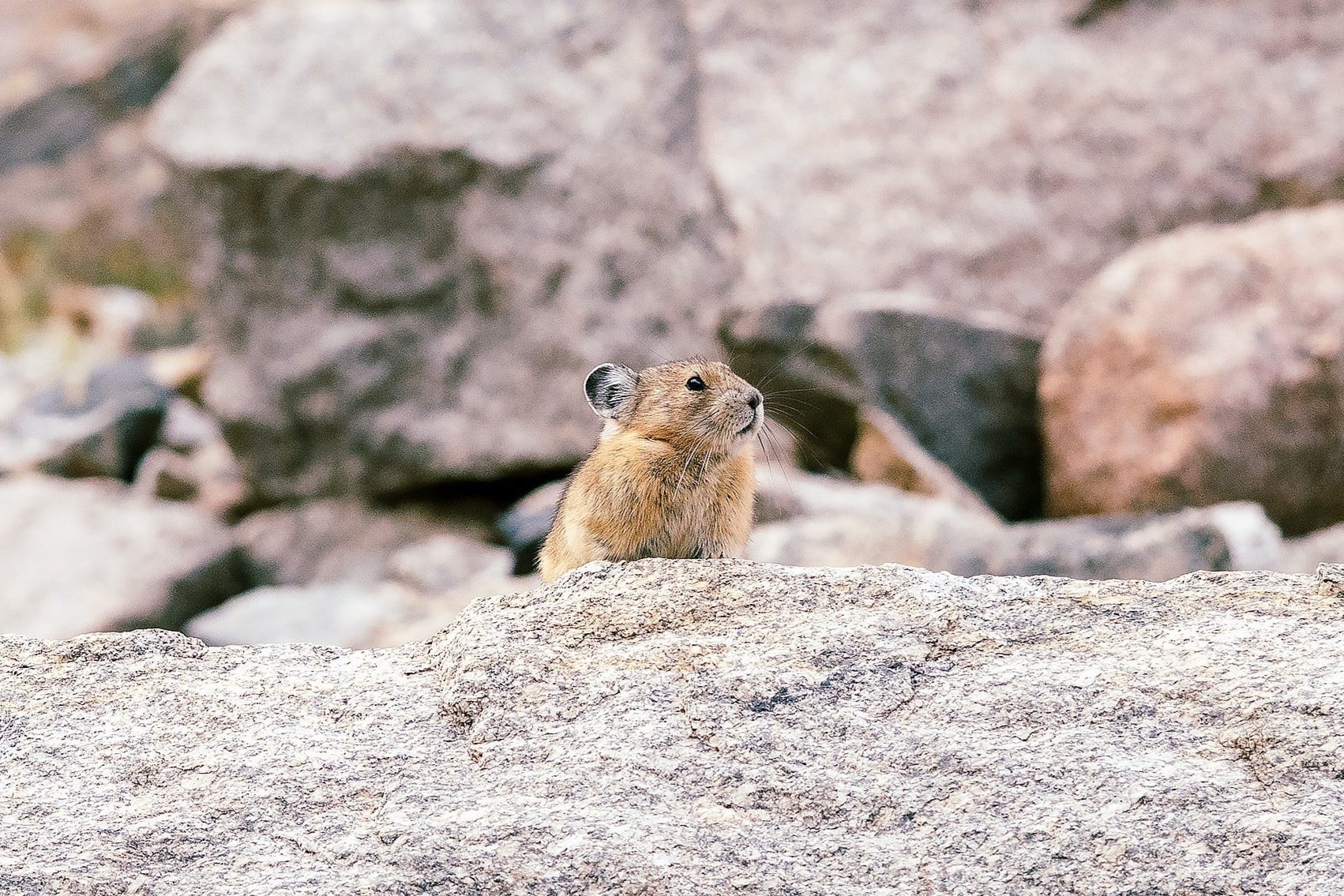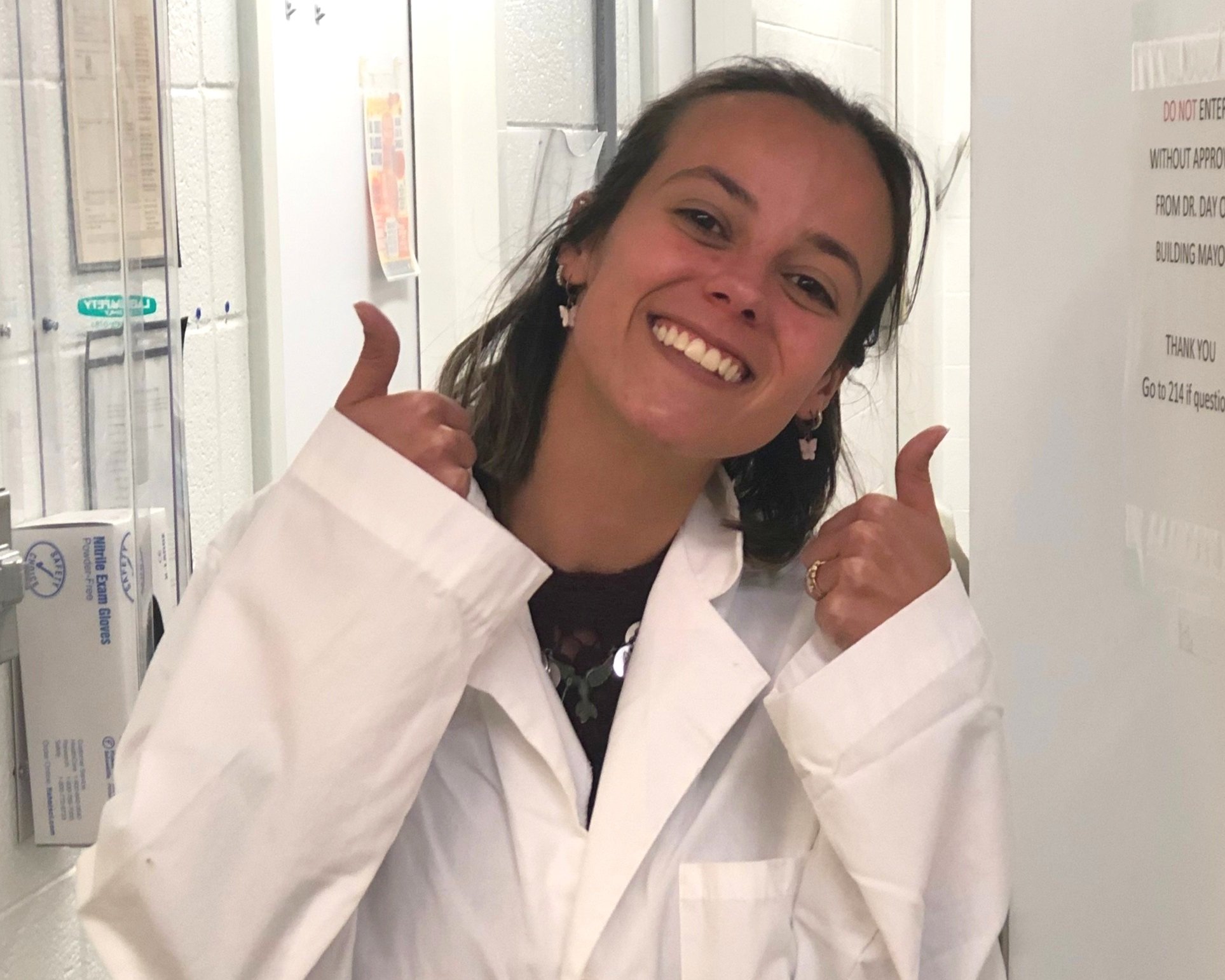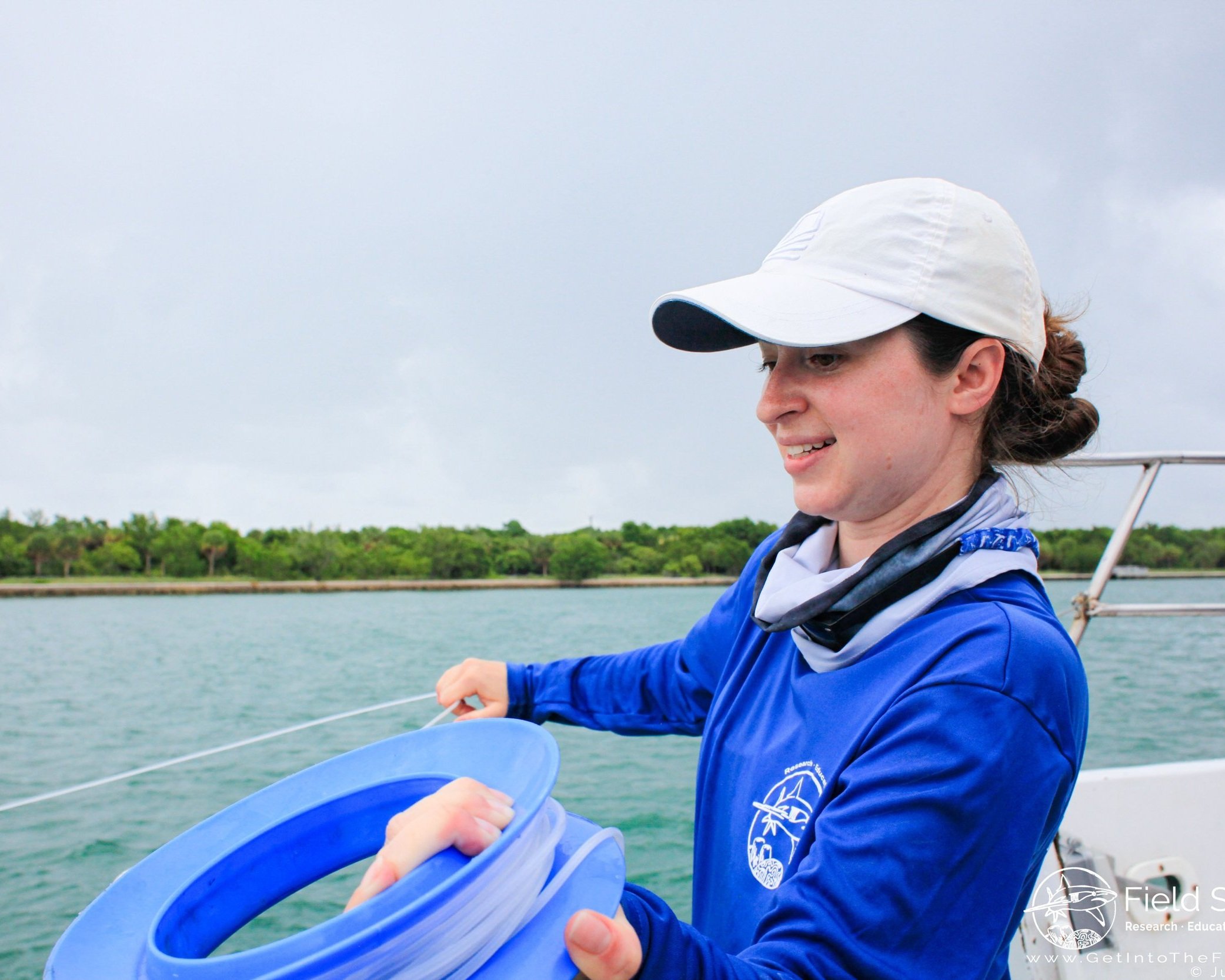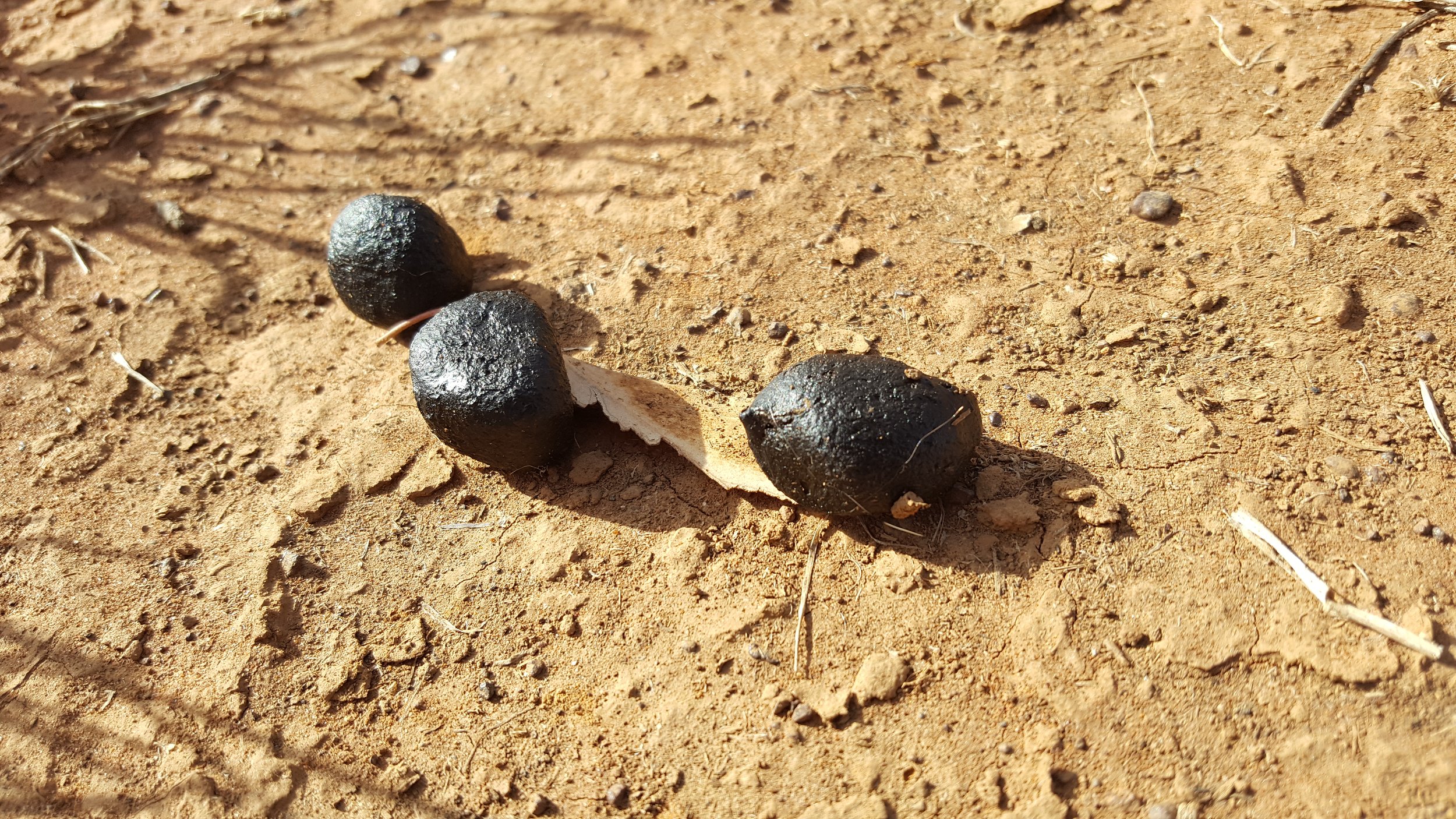Wild Animal Initiative funds 26 new wild animal welfare projects
February 22, 2023
Wild Animal Initiative has selected 26 new projects to advance research on wild animal welfare and add to a growing body of scientific data in this area. With more than $700,000 distributed across the projects, we are investing in researchers who show interest in welfare biology. Nearly half of the projects are led by graduate students or postdoctoral researchers, early-career scientists still refining their areas of expertise.
Our 2022 call for proposals prioritized projects that featured:
Innovative methods for measuring wild animal welfare
Innovative methods for monitoring wild animal welfare
Population regulation
Rehabilitation and conservation
We received more than 400 responses, topping the number of responses we received from our first call for proposals.
Though our selected studies cover a range of species and will take place in diverse locations, many of them feature concepts or approaches that could transfer to a great number of individuals living elsewhere in the wild, increasing our chances to further meaningful research for more wild animals. Below, you can read more about each project.
Photo courtesy Jessica X. Wright-Lichter.
-
Jessica X. Wright-Lichter (Tufts University); United States
Grant: $30,000
No published studies examine how prolonged exposure to the bait-administered contraceptive Nicarbazin (NCZ) affects urban pigeons beyond the contraceptive effect itself, even though evidence suggests it may impact ability to cope with high heat. To study the impact of NCZ treatment on pigeon welfare, this project will treat pigeons with NCZ and expose them to short periods of a rapid increase of ambient temperature, using corticosterone levels and behavioral responses as physiological proxies for welfare. The researchers will compare reactions to a control group of pigeons untreated with contraception.
-
Jess Harvey-Carroll (Independent researcher/University of Gothenburg); Sweden
Grant: $30,000
Currently, little information is available on time spent foraging during the harbor seal lactation period. It is unknown how overfishing affects the tradeoff between time spent foraging and offspring care, and the resulting welfare of the pups. This project will use camera trap footage and state-of-the-art 3D modeling to non-invasively assess maternal and pup welfare during periods of maternal absence. The welfare assessment will be aggregated at a colony level to compare welfare between colonies with more and less access to food.
Photo courtesy Emma Stone.
-
Emma Stone (Carnivore Research Malawi/University of Bath); Malawi/United Kingdom
Grant: $30,000
Lilongwe City (the capital of Malawi, central Africa) supports a population of urban spotted hyena. However, human-wildlife conflict is frequent, often resulting in persecution of these animals. This project will measure and compare fecal and hair cortisol levels (as a proxy of stress), mean body condition, tooth wear, hematological parameters, and disease (toxoplasmosis and rabies) in spotted hyena between urban (Lilongwe district) and rural (Kasungu National Park) populations.
Photo courtesy Patrick Tkaczynski.
-
Patrick Tkaczynski (Liverpool John Moores University); United Kingdom
Grant: $29,931
For group-living vertebrates, facets of play and grooming could indicate positive welfare, but a formal framework of these behaviors does not exist for monitoring wild animal populations. This project will use play and grooming behavior in wild Barbary macaques to quantify social time allocation, emotional contagion/synchronization, and social attention as potential assays of positive welfare. Human exposure — typically associated with poor health outcomes in wild outcomes — will be used to help validate assays.
Photo courtesy Teresa Romero.
-
Teresa Romero (University of Portsmouth) and Jose Gonzalez-Rodriguez (University of Lincoln); United Kingdom
Grant: $19,100
This project aims to validate Raman spectroscopy as a novel non-invasive technique to measure steroid hormone levels in hair of wild animals. Analyses of hormones accumulated in hair, such as cortisol, are a powerful tool for measuring chronic stress in animals, without the challenges and ethical issues associated with the collection of serum or saliva. Using this technique, which is suitable for field use and does not require sample pre-treatment, the project will improve quality and speediness of data acquisition.
Saana Isojunno, Julia Sutherland, and Eve Jourdain. Photos courtesy Saana Isojunno.
-
Saana Isojunno, Julia Sutherland (University of St. Andrews), and Eve Jourdain (Norwegian Orca Survey); United Kingdom and Norway
Grant: $28,707
This project will use aerial photography from drones to gather data on body condition, feeding rates, group composition and surface behavior, and other quantitative metrics that influence killer whale welfare. The researchers will then develop a proof-of-concept statistical model, which aims to infer “true” welfare as a latent state variable beneath the observable data. As well as data from a population that feeds on inshore prey such as seals in Scotland, the project will also use data from known cases of feeding cessation in whales that were rescued from coastal entrapment in Norway.
Photo courtesy María Díez León.
-
María Díez León (University of London); United Kingdom
Grant: $28,750
This project aims to assess how pre-release welfare affects post-release welfare in European mink participating in reintroduction programs. To measure welfare, the study will use two behaviors thought to track positive and negative welfare states, as well as fecal glucocorticoid metabolite levels. The welfare of captive-born mink will be contrasted to a benchmark wild population.
Photo courtesy Cameron Semper.
-
Cameron Semper (University of Calgary/University of Lethbridge); Canada
Grant: $30,000
Loop-mediated isothermal amplification (LAMP) is a low-cost technique that amplifies specific DNA to levels that can enable visual detection. This project aims to develop LAMP assays for rapid pathogen or parasite detection in wild animals by developing methods for detecting specific viral, bacterial, and parasite infections. As a pilot study, select assays will be validated by testing for parasite DNA in fecal samples from deer mice.
Photo courtesy Ross Macleod.
-
Ross MacLeod, Julia Nowack, Will Robson, and Luiza Figueiredo Passos (Liverpool John Moores University); United Kingdom
Grant: $29,810
This project aims to test and validate the use of thermal imaging cameras to measure body surface temperature in wild animals. Building on pilot work, the project will focus on wild bird populations to develop a standardized thermal imaging methodology capable of monitoring surface temperature in a wide range of free-living animals.
Photo courtesy Laney Hayward Nute.
-
Laney Hayward Nute and Richard Buchholz (University of Mississippi); United States
Grant: $30,000
This project seeks to reduce stress and suffering in post-release translocated prairie chickens by identifying a set of pre- and post-release indicators of welfare that will be used to target individuals for management interventions. The researchers hypothesize that individuals with a more proactive, “bold” personality will disperse further post-release and suffer higher mortality rates compared to more reactive individuals.
Photo courtesy Dom Cram.
-
Dominic Cram (University of Cambridge); United Kingdom
Grant: $29,965
The health and well-being consequences of individuals involved in “animal warfare” remain unclear. This research will investigate the welfare consequences of intergroup interactions and fights in wild meerkats, taking advantage of an established dataset of meerkat behavior, body weight, territory use, and reproduction. Clarifying the circumstances that lead to the most harmful battles will provide a first step in understanding how their frequency could be reduced.
Mallory Lambert and Johanna Varner.
-
Johanna Varner (Colorado Mesa University) and Mallory Sandoval Lambert (Utah State University); United States
Grant: $28,500
This project will assess the welfare of pikas in isolated mountain ranges with limited high-elevation habitat. The researchers will examine patterns of stress, survival, population demographics, parasite load, and other physiological welfare metrics. Then, they will test hypotheses correlating these welfare indicators to aspects of habitat quality. Finally, they will investigate potential resource competition between pikas and mountain goats as another possible driver of pika welfare.
Photo courtesy Sam Sonnega.
-
Sam Sonnega (University of Massachusetts Dartmouth); United States
Grant: $29,130
This project will investigate the relationship between gut microbiome, stress physiology, and behavior, including how it changes in response to ecological pressures. Researchers will collect fecal samples from white-footed mice during different seasons to measure glucocorticoid concentrations and gut microbiome composition. The mice’s perception of predation risk will also be experimentally manipulated by exposing free-living mice to playbacks of predator noises.
Caroline Deimel. Photo credit: Axel Griesch.
-
Caroline Deimel (Max Planck Institute for Biological Intelligence); Germany
Grant: $29,130
Breath rate as a non-invasive proxy of stress has not been evaluated in a bird welfare context. This project aims to provide a validated, non-invasive reference tool for standardizing breath rate measurements following physical sampling protocols in wild birds. By using and improving recently developed computer vision algorithms to analyze mobile phone videos, it eliminates experimenter bias and improves the reproducibility of results.
Photo courtesy Meghan Holst.
-
Meghan Holst (University of California, Davis); United States
Grant: $19,200
Little has been done to evaluate the potential unrecognized consequences of human activities, including fishing and vessel traffic, in the San Francisco Bay on the health and welfare of elasmobranch species. This project will measure stress physiology and blood contaminants to evaluate whether these activities threaten the health and welfare of elasmobranchs in this area. Additionally, the project will evaluate the dietary needs of elasmobranch species and map ecological relationships within the ecosystem.
Photo credit: JAAN.
-
Loes Schure (Vets4welfare Foundation); The Netherlands
Grant: $20,000
This project will compare cortisol concentrations in the hair of Southeast Asian monkeys from three groups: a group whose members have spent their whole lives in the wild, a group that has been kept in captivity for the entertainment or pet industry, and a group that are in the process of rehabilitation following rescue from the entertainment or pet industry. Hair cortisol data will be compared with veterinary and forensic records and other welfare-relevant observations when possible.
Photo courtesy Claudia Wascher.
-
Claudia Wascher and Sam Reynolds (Anglia Ruskin University); United Kingdom
Grant: $18,679
Although bioacoustic monitoring is a well-established method in captive animals, the method has not been used in wild animals to assess positive and negative emotional states. This project will assess and validate the use of passive bioacoustic monitoring to assess welfare in a reintroduced population of birds. Their approach will allow them to record vocalizations and behavior during natural events expected to influence welfare, such as anthropogenic noise, predation events, intraspecific aggression, resting, or affiliative behaviors.
-
Luiza Figueiredo Passos (Liverpool John Moores University); United Kingdom
Grant: $29,060
Vocalizations could serve as potentially useful non-invasive indicators for inferring wild animal welfare. This proposal aims to use passive acoustic monitoring to record wild bird calls at different locations in urban, rural, and conservation-managed areas. Validating this approach could provide the basis for future application to birds in general, providing a method to monitor welfare and changes in welfare of wild birds at any location globally.
Photo courtesy David Daversa.
-
David Daversa, Brad Shaffer, and Matteo Pellegrini (University of California, Los Angeles); United States
Grant: $30,000
This project will apply epigenetic tools to develop minimally invasive and aggregate measures of animal welfare, aiming to demonstrate proof of concept for a DNA methylation (DNAm)-based model of wild animal welfare. DNAm is a biomarker of aging and an indicator of cumulative stress. This project will characterize DNAm in western toads (Anaxyrus boreas), testing the influence of disturbed habitat and infection with a fungal pathogen on DNAm. The researchers will also test its covariance with demographic factors such as age and sex.
Photo courtesy Akshay Bharadwaj.
-
Akshay Bharadwaj (Indian Institute of Science); India
Grant: $15,000
This project will use mist-netting and bird-banding, followed by standardized observations of behavior and body condition, to examine the relationship between individual-level social behavior, bird health, and survival within mixed-species bird flocks. Feather corticosterone level, ectoparasite load, and other morphological parameters will be used to measure the health of each banded individual. The researcher will also take advantage of a long-term bird-banding dataset, spanning 12 years, to examine the linkages between inter-individual differences in social behavior and the survival of each individual, comparing survival rates and reproductive success in primary and logged forests.
Photo courtesy Morteza Naderi.
-
Morteza Naderi (Koç University); Turkey
Grant: $29,955
Habitat fragmentation, increasing contact with humans, and other challenges present long-term threats to the welfare of brown bears and other large omnivores. This project will monitor the behavior and stress physiology of individual free-living bears using GPS collars, camera traps, and blood and fecal glucocorticoids. Location and behavior data will be paired with glucocorticoid results to better understand the welfare implications of exposures to various stimuli such as garbage dumps or roads. Researchers will take the same physiological measurements on bears residing at a rehabilitation center in the study region for comparison.
Photo courtesy Paula Serres-Corral.
-
Paula Serres-Corral (Universitat Autònoma de Barcelona); Spain
Grant: $25,385
Glucocorticoids are currently the most commonly used physiological indicators of stress and animal welfare. This project will investigate complementary biomarkers to glucocorticoids — oxytocin and secretory immunoglobulin A — which are markers of neuroendocrine and immune function, respectively. These have been proposed as potential indicators of positive affective states. Researchers will aim to validate the measurement of oxytocin and secretory immunoglobulin A in lion feces as a model for social carnivores and evaluate their applicability as additional physiological indicators in wildlife welfare studies.
Photo courtesy Miriam Zemanova.
-
Miriam Zemanova (University of Fribourg); Switzerland
Grant: $28,500
Glucocorticoids are hormones that are released by the adrenal gland in response to stimuli, including stress. Because of this response, glucocorticoid levels are regularly implemented as a measurement of animal welfare. Through a systematic review process, this project seeks to provide an evidence base for the efficacy of non-invasive measurement of stress levels in wild animals using faecal glucocorticoids in wild animals. The results will provide an evidence base for the validity and efficacy of faecal glucocorticoids measurement and identify both challenges and best practices for working across multiple animal taxa.
Photos courtesy Monica Wakefield (left) and Corinna Most (right).
-
Corinna Most (Northern Kentucky University) and Monica Wakefield (Iowa State University); United States
Grant: $29,800
This project aims to analyze a long-term longitudinal dataset on wild baboons to assess their welfare, taking advantage of almost 40 years of ecological, demographic, health, and behavioral information on more than 150 individual baboons. Researchers will examine how various factors such as age, sex, and social rank correlate with individual welfare measures such as incidence of injury and disease, body mass, and pro-social or agonistic behaviors.
Photo courtesy Lisa Olivier.
-
Lisa Olivier (Game Rangers International); Zambia
Grant: $29,792
This project aims to test the approach of mapping wild animals’ perception of their environment by monitoring an array of behavioral and physiological parameters in elephants over six months as they navigate the landscape. These aggregated measures will define a scale representing the animals’ perceptions of threat that can be estimated for a given time and place. The researchers will then project these data onto maps to identify areas of high and low welfare, where animals may be feeling alternatively secure or fearful. The researchers intend for the project to help conservation practitioners create better management plans to protect wild animal populations by providing a head start in assessing changes in their surroundings.
Photo courtesy Joe Hediger.
-
Joe Hediger (Texas A&M University); United States
Grant: $25,860
This project aims to assess the reliability of fecal tri-iodothyronine (T3) and fecal glucocorticoids (cort) as non-invasive physiological metrics for monitoring the health and welfare of white-tailed deer. The use of T3 as an indicator of welfare is relatively novel, and the researchers plan to refine the use of these metrics through controlled experiments that correlate T3 with a more widely used proxy of health and welfare, cort. Both T3 and cort will be validated with behavioral observations of the same deer that are assumed to reflect their emotional state.
These grants were made possible thanks to the generous support of Open Philanthropy. To discuss how your gift or grant could continue to advance welfare biology, please contact Executive Director Cameron Meyer Shorb.
This post was updated on March 8, 2023, to include additional grantee photos and project summaries.

























